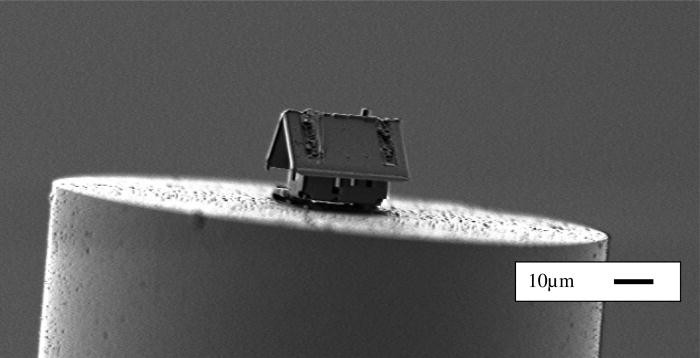In the world of architecture and living spaces, the tiny house movement has been nothing short of revolutionary. From minimalist dwellings to mobile tiny homes, this trend has engendered a profound shift toward sustainable living. However, a groundbreaking new advancement is pushing the boundaries of what “tiny” truly means. Researchers at the Femto-ST Institute in France have developed a “nano house,” measuring a mere 20 micrometers across—almost as tiny as a New York City studio, but on an entirely different scale.
The Technological Marvel of μRobotex
The jewel of the nano house is the μRobotex, a robot that operates with an astounding precision—down to 2 nanometers. This technology showcases not only innovation but also the meticulous assembly techniques that can be applied in various industries ranging from biotechnology to sensor development. The μRobotex first lays down a silica layer on the tip of an optical fiber, which is thinner than a human hair. The magic truly happens when an ion beam comes into play, selectively cutting and scoring the material to create walls that will fold into place like origami.
From Concept to Implementation
The implications of this technology extend far beyond the curiosity of creating a tiny structure. It opens doors to developing specialized sensors capable of navigating inaccessible areas, which could significantly influence fields like environmental monitoring and medical diagnostics. Imagine a biological sensor that can integrate seamlessly with the tips of optical fibers, giving scientists the ability to observe and record phenomena previously out of reach. Studies in the Journal of Vacuum Science and Technology detail the precise methods behind this pioneering project, highlighting its potential applications.
The Future of Nano Architecture
- Redefining Space: The vision for nano structures extends to designing even smaller entities that can fit through the windows of this nano house. Think of carbon nanotubes acting as conduits for data and energy, ushering in an era where miniature mechanisms can have a monumental impact.
- Environmental Monitoring: With the ability to place sensors in hard-to-reach environments, researchers can gather real-time data on air quality, radiation levels, and even biological activity, aiding in ecological studies and disaster response.
- Medical Advances: Nano houses could revolutionize the medical field by enabling the development of devices that can operate at the cellular level, leading to breakthroughs in both diagnostics and treatment.
Conclusion: A Glimpse into an Unforeseen Future
The ingenuity behind this nano house illustrates that the trends we see today may just be the tip of the iceberg. As technology continues to cater to increasingly smaller scales, the possibilities seem endless. At **[fxis.ai](https://fxis.ai)**, we believe that such advancements are crucial for the future of AI, as they enable more comprehensive and effective solutions. Our team is continually exploring new methodologies to push the envelope in artificial intelligence, ensuring that our clients benefit from the latest technological innovations.
This innovative leap invites us to reconsider our notions of space, utility, and the intricate relationship between technology and our daily lives. The tiny house may be evolving in size, but its impact on society could be far-reaching. For more insights, updates, or to collaborate on AI development projects, stay connected with **[fxis.ai](https://fxis.ai)**.

